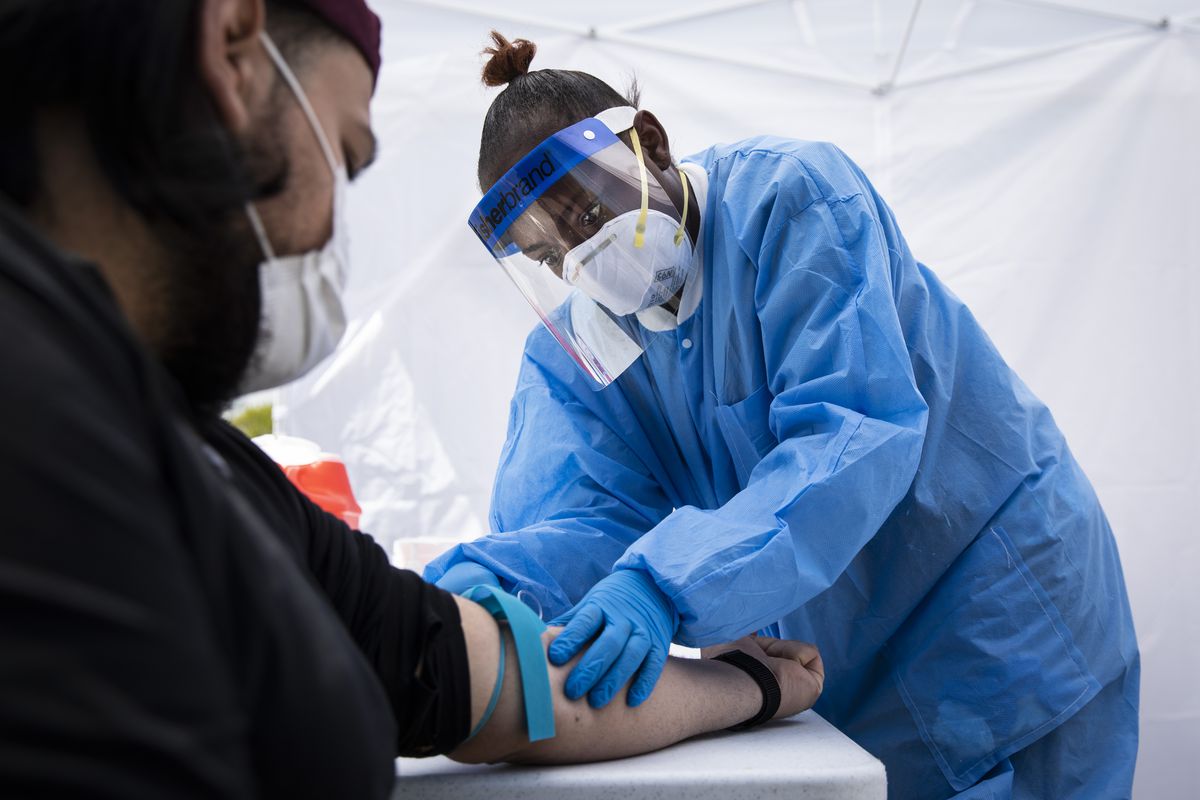The Latest
Coronavirus testing: an updated guide on what’s available, what it does, what’s coming
Much has changed about testing for current COVID-19 infection and antibody testing for past exposure. Here’s an updated guide on what you need to know:
Diagnosing the virus
What we have now: The most widespread tests to diagnose current COVID-19 infection are the polymerase chain reaction — or PCR — tests that involve swabbing a person’s nasal passages and looking for the coronavirus’ genetic material.
Results come as quickly as less than 15 minutes with the rapid test, about which false results have been an issue, or within a couple of days if sent to a lab.
What’s coming: More tests are on the way. Scientists at Sherlock Biosciences in Cambridge, Massachussetts, are using gene-editing technology known as CRISPR to develop another type of rapid test that could be produced for as little as $6 per test.
And a new saliva test developed at Rutgers University holds great promise because it would be easy to administer even at home.
“Anybody can spit,” says Dr. Robert Murphy, executive director of the Institute for Global Health at Northwestern University’s Feinberg School of Medicine, who is helping a national effort to develop point-of-care technologies. “Saliva will open the door for mass testing.”
Read the full report from Stephanie Zimmermann here.
News
7:00 a.m. Nursing homes account for more than half of coronavirus deaths in Illinois, new data shows
Illinois nursing homes now account for 52% of all coronavirus deaths in Illinois, data released Friday shows.
The Illinois Department of Public Health on Friday reported 2,747 coronavirus deaths in Illinois nursing homes and long-term care facilities, and 17,133 cases.
The data this week again reflects a change in how the numbers were reported from previously. Last week, Illinois officials said they would no longer be reporting cases and deaths from homes which had not recorded a new case of coronavirus in the past 28 days. A day later, though, the state quietly reversed course and released updated data which included the cumulative number of cases and deaths since the start of the outbreak.
The state’s nursing home data continues to be riddled with inconsistencies, with some homes reporting a decrease in cases and deaths, despite assurances from Illinois officials that the data is cumulative. The state previously stopped counting “probable” nursing home cases and now reports only laboratory-confirmed cases, which had led totals to drop at some homes.
According to the data released on Friday, Illinois has 536 homes which have had cases of coronavirus. But a Sun-Times review of that data found that multiple homes were listed twice both in the data released by the state and on their website.
Read the full report from Caroline Hurley here.
New cases
Analysis & Commentary
7:00 a.m. University of Illinois football and basketball players — essential workers — head back to campus
Some student workers at the University of Illinois at Urbana-Champaign will return to campus next week to start preparing for their football and men’s basketball seasons.
Did I say workers? Yes, that’s what they are. The university calls them student-athletes, and they are that, too.
But please make no mistake. They are employees at the U. of I. That they are going back, though summer classes were moved online because of the pandemic, underscores how valuable they are to the university.
They are not just students or athletes. They are workers, too.
It looks like they will be treated a lot better than many other workers across America. They are fortunate in that regard. In announcing the athletes’ return, the school said it was coordinating with sports medicine staff, local doctors and the Champaign-Urbana Public Health District. That’s a lot of oversight.
June workouts will be voluntary at the U. of I. The athletics department has promised to honor financial aid commitments — their pay — even if athletes are no-shows because of concerns over the coronavirus.
But the pressure is on. Forgoing workouts means you are letting down the team. That makes it tough to say no to driven, demanding coaches.



















